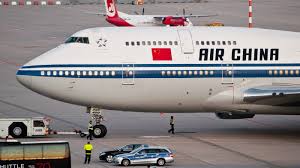
News Americas, LONDON, England, Tues. Dec. 1, 2015: Air China has confirmed that it will inaugurate a Beijing to Havana air service on December 27th.
The flight which will extend the airline’s relatively new, three times a week, Beijing to Montreal service, will take about twenty hours in all to reach Cuba, involves a three hour stopover in Canada, and uses an extended range Boeing 777-300ER aircraft.
The service, which has fifth freedom rights, is allowed to pick up passengers in Canada for travel to Cuba, and forms a part of an eventual longer term business approach by Air Canada to create with Air China a trans-Pacific joint revenue sharing venture.
The new link will be the first same-plane service to bring Chinese visitors and business people directly into the Caribbean. For China and Cuba the route will be strategically important given the two countries’ close ties. It will also demonstrate China’s growing presence and role in the Latin American and Caribbean region.
What, however, will be interesting to see is whether the numbers of Cuba-bound tourists originating in Beijing increase in a sustainable way and if over time, the intention is to link the flights to Chinese Caribbean cruise vacations. At present Cuba says it has about 20,000 Chinese visitors annually, but has not specified how many of these are travelling on business or for meetings with government.
In announcing the new service, the Cuban media laid emphasis on official suggestions that the new route is intended not only to catalyze tourism from China to Cuba but will also offer the opportunity to develop multi-destination tourism in the Latin American and Caribbean region. However, until Chinese tourist numbers develop substantially, this at best would seem to be aspirational; although interestingly the new route may offer a quicker route to China for the ever increasing numbers of Caribbean officials and visitors travelling there.
That said, the entry of Air China into the Caribbean is likely to be the first among a number of international carriers that are considering new long haul services into the wider region. Another is Emirates, which according to industry sources is to introduce a daily non-stop flight between Dubai and Panama City; a hub that has excellent and easy flight connections to much of Latin America and the Caribbean.
Emirates – which has a reputation for a level of service that puts US and European carriers to shame – is scheduled to begin their Panama City route next February with a flight that will take 17 hours 35 minutes to cover around 8,500 miles non-stop, making it for a while the world’s longest scheduled passenger service.
What these new, often subsidized services demonstrate is the changing nature of the wider region’s relationship with the world and the relocation of global economic opportunity. At one level it reflects the evolution of the Caribbean Basin’s political and economic relations with the world. As the Gulf States, Russia, and countries of South America and those to the west across the Pacific see the potential of a much deeper relationship, they are prepared to introduce new air services mixing state and commercial considerations.
At another level, new services respond to efforts by larger Caribbean Basin and Latin American destinations to actively diversify their visitor feeder markets using route development funding; the often complex financial incentive schemes that have the effect of paying an international carrier to fly to a destination in return for agreed levels of airlift and a guaranteed number of seats.
Thirdly, changing global investment and business interest in Latin America and the Caribbean is making viable, routes previously considered marginal, as high yield passengers in premium cabins enable airlines to adjust their profit matrix in ways that recognize the increasing number of those with disposable income willing to travel further to a vacation destination. And finally, there is the likelihood that new very long range aircraft coming into service will enable in the near future passengers to consider travelling non-stop much further distances to key hubs like Miami or Panama, or even directly to larger Caribbean nations like Cuba and the Dominican Republic.
In this latter respect what are known as ultra-long-range flights are likely to become the norm in the next few years as a new generation of lighter fuel-efficient aircraft begin to enter service. These are the Boeing 777-8 and the Airbus A350-900ULR which will enable dramatically extended non-stop services to fly for nineteen hours or more. If airlines can make the economics work and increase demand based on the low cost of aviation fuel and keen fare structuring, such ultra long distance flying could become the new norm, especially on premium international routes such as those between Singapore and New York or Australia and London.
If this does happen it potentially offers new opportunities for Caribbean tourism, opening up the possibility of encouraging visitors from populous non-traditional markets in Asia, the Indian sub continent and the Middle East. However this will only work for the Caribbean if it recognises that aircraft flying longer distances initially will only fly to hubs with good inter-connectivity – Miami, Panama, and as relations with the US change, Havana – and requires thinking differently about market development.
Put another way, while there will continue to be many opportunities to grow and diversify the existing Caribbean tourism market in Europe, North and South America through direct scheduled and charter services, creative thinking will be required about linking with carriers flying directly from potential new feeder markets to the principal hubs that serve the region.
As there is no longer any strong commercially-viable inter-regional carrier, this is most likely to mean in the short to medium term working closely with others already operating in the Caribbean Basin like the financially successful Panamanian regional airline Copa, and with US legacy carriers and newcomers that have code share arrangements and are able to provide connectivity. The region however may need to wait for some time before it can see whether Air China’s new Havana route encourages Chinese travelers to develop a taste for land-based or cruise vacations in the Caribbean, and if an opportunity then arises for a direct China service using ultra-long-range equipment.









